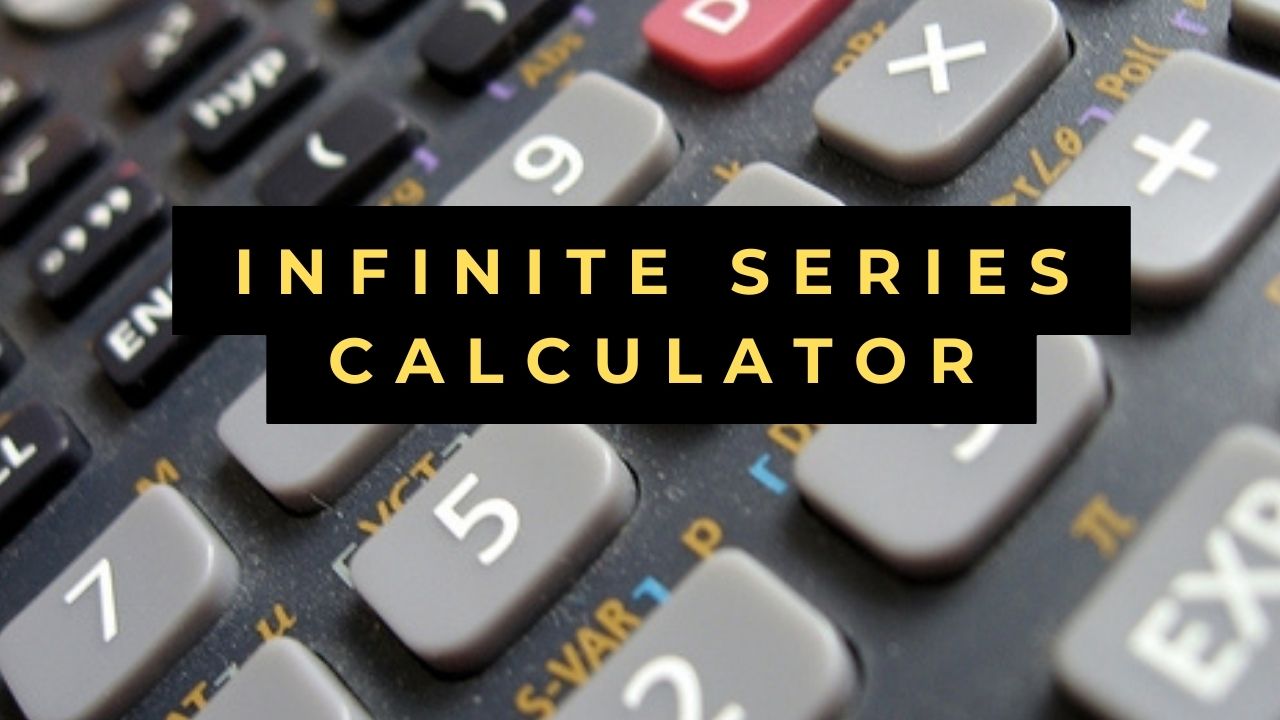Infinite Series Calculator
- Inequality Calculator
- Indefinite Integral Calculator
- Inch To Feet Calculator
- Improper Integral Calculator
Infinite Series Calculator with Steps
Easily compute the sum of infinite series with the Infinite Series Calculator. Learn how to evaluate convergent and divergent series accurately and efficiently. Simplify your mathematical computations today!
Infinite Series Calculator
Welcome to our comprehensive guide on exploring infinite series using the Infinite Series Calculator. Infinite series play a fundamental role in mathematics, representing the sum of an infinite sequence of numbers. In this article, we'll delve into the concept of infinite series, their convergence properties, and demonstrate how to use our calculator to compute them effortlessly.
Understanding Infinite Series Calculator
An infinite series is the sum of the terms of an infinite sequence. It is represented in the form ∑n=1∞an, where an denotes the n-th term of the sequence. Infinite series can either converge, meaning that the sum approaches a finite value, or diverge, meaning that the sum approaches infinity or oscillates without converging. Understanding the convergence or divergence of infinite series is crucial for mathematical analysis and applications in various fields.
Importance of Accurate Computation
Accurate computation of infinite series is essential for mathematical analysis, modeling, and problem-solving in physics, engineering, finance, and other scientific disciplines. Whether you're evaluating power series, approximating functions, or analyzing complex systems, precise computation of infinite series ensures reliable results and informed decision-making.
How the Infinite Series Calculator Works
The Infinite Series Calculator simplifies the process of computing the sum of infinite series by providing instant and accurate results. Simply input the formula for the n-th term of the series and, optionally, the number of terms to compute, and the calculator will evaluate the sum automatically. Our user-friendly interface makes it accessible to users of all mathematical skill levels.
Step-by-Step Guide to Using the Infinite Series Calculator
- Enter Series Formula: Input the formula for the n-th term of the series into the designated field.
- Specify Number of Terms (Optional): If computing a partial sum, input the number of terms to compute into the appropriate field.
- Click Calculate: Initiate the calculation process by clicking the calculate button.
- View Result: Instantly receive the computed sum of the infinite series.
Practical Applications
Infinite series find application in various real-world scenarios, including physics, engineering, finance, and computer science. Whether you're modeling oscillations, analyzing signal processing algorithms, or solving differential equations, understanding and computing infinite series are essential skills for practical mathematics and scientific analysis.
Advantages of Using the Infinite Series Calculator
- Efficiency: Saves time by automating the process of computing infinite series.
- Accuracy: Provides precise results, minimizing the risk of errors in mathematical computations.
- Versatility: Applicable to a wide range of infinite series and mathematical contexts.
Common Errors to Avoid
When using the Infinite Series Calculator, users should be cautious of common errors that can affect the accuracy of computations:
- Incorrect Term Formula: Ensure that the inputted formula for the n-th term of the series is correctly formatted and represents the intended mathematical expression.
- Improper Number of Terms: Verify that the specified number of terms is appropriate for the desired level of precision or convergence testing.
- Rounding Errors: Be mindful of rounding errors when dealing with numerical approximations of series sums.
Tips for Efficient Computation
To optimize efficiency and accuracy when computing infinite series, consider the following tips:
- Choose Series Test: Select appropriate convergence tests, such as the ratio test, integral test, or comparison test, to analyze the convergence behavior of the series.
- Validate Results: Validate the computed series sum by comparing it with known results or using alternative methods of computation.
- Understand Series Behavior: Familiarize yourself with the convergence properties and behavior of common infinite series to anticipate convergence challenges and select suitable computation methods.
FAQs
Q: Can the Infinite Series Calculator handle series with alternating signs or factorial terms?
Yes, the calculator can compute the sum of infinite series with alternating signs, factorial terms, and other common patterns.
Q: Is the Infinite Series Calculator suitable for educational purposes?
Absolutely! The calculator is an excellent educational tool for teaching and learning about infinite series, convergence tests, and mathematical analysis.
Q: Can I access the Infinite Series Calculator on mobile devices?
Yes, the calculator is compatible with both desktop and mobile platforms, ensuring accessibility on the go.
Q: Does the calculator provide step-by-step solutions to infinite series problems?
While the calculator offers instantaneous results, users can find step-by-step solutions in accompanying guides or resources.
Q: Are there any fees associated with using the Infinite Series Calculator?
No, the calculator is free to use and requires no subscription or payment.
Q: Can I trust the accuracy of the computed series sums provided by the calculator?
Absolutely! The calculator employs robust algorithms to ensure precise and reliable computation of infinite series sums.
Conclusion
In conclusion, understanding and computing infinite series are essential skills in mathematics and various scientific and engineering disciplines. The Infinite Series Calculator serves as a valuable tool for simplifying this process, offering efficiency, accuracy, and versatility. By following the guidelines outlined in this article, you can confidently compute infinite series and analyze their convergence properties with ease.

